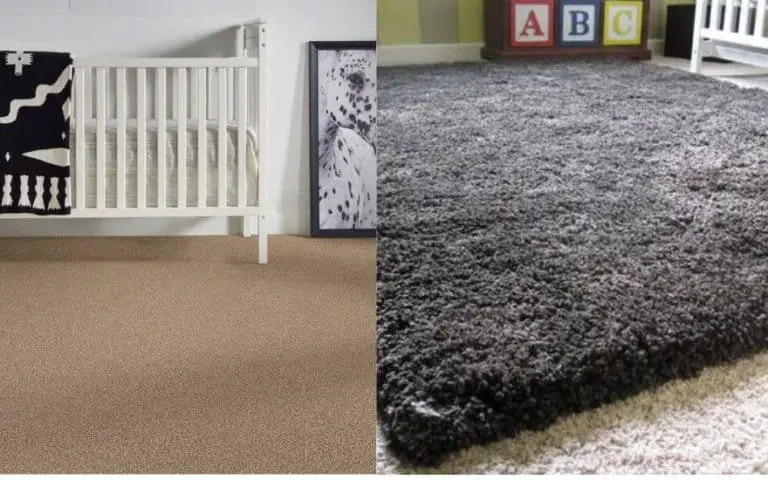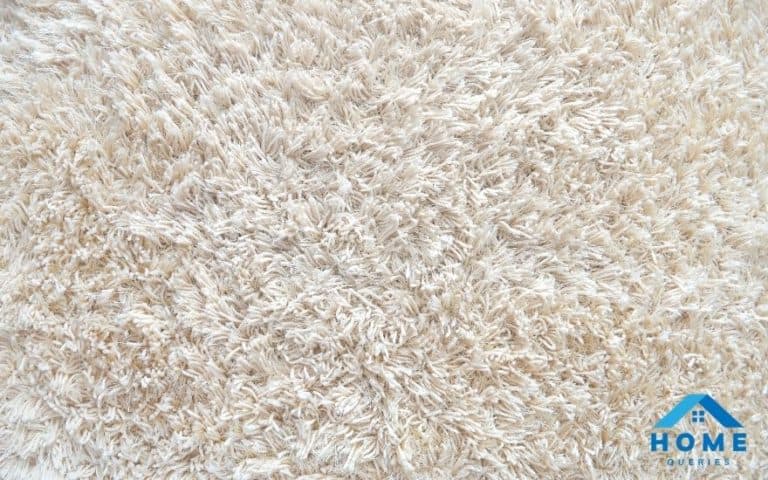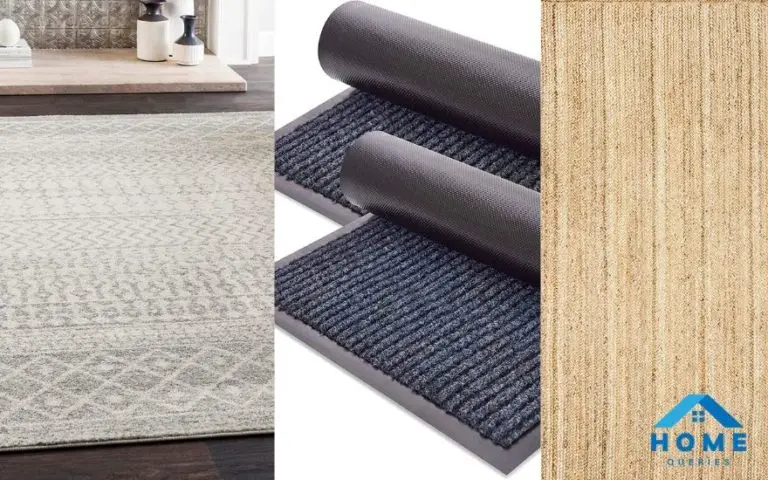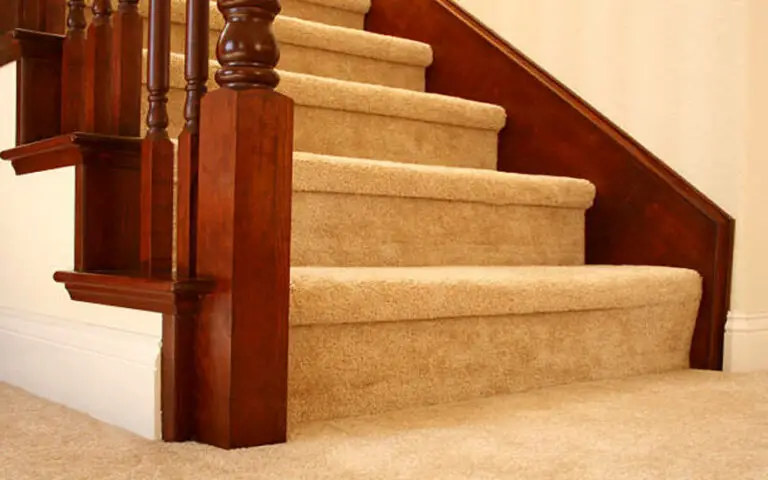Installing carpet padding on concrete is not as difficult as it may seem. In fact, with the right tools and instructions, it can be a relatively easy process.
This blog post will provide you with step-by-step instructions on how to install carpet padding on a concrete floor, as well as some tips and tricks to make the process go more smoothly.
So if you’re thinking about installing a new carpet in your home, read on for all the information you need!
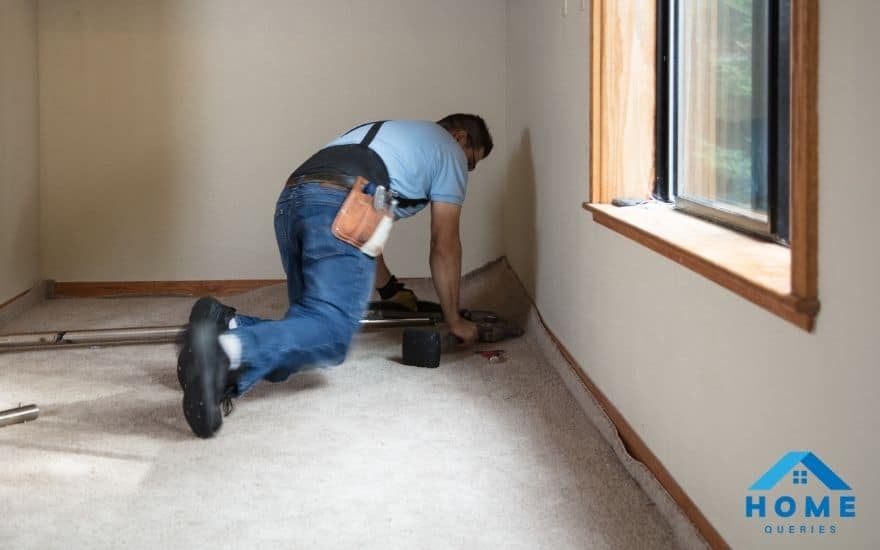
How to Prepare Concrete Floors For Carpets?
There are a few things to keep in mind when preparing concrete floors for carpets. The first is to make sure the floor is clean and free of any debris or dirt. The second is to ensure that the floor is completely dry before starting the installation process. And lastly, it is important to install the carpet padding and carpet backing material correctly to avoid any future problems. Here are the detailed instructions on how to prepare concrete floors for carpets:
1. Start by sweeping the floor clean with a broom or vacuum cleaner. Be sure to remove all dirt, dust, and debris from the surface.
2. Next, use a damp mop or cloth to clean the floor once again. This will help remove any remaining dirt or particles.
3. Once the floor is clean and dry, it’s time to install the carpet padding. Begin by unrolling the padding and cutting it to size with a utility knife.
4. Next, use an adhesive spray to attach the padding to the floor. Be sure to follow the manufacturer’s instructions for the best results.
5. Now it’s time to install the carpet backing material.
How To Install Carpet Padding On A Concrete Floor?
First Step:
Clean the floor and make sure it is free of dirt, dust, and other debris. Any type of carpeting can be installed on a concrete floor, however, padding is recommended for added comfort and support.
Second Step:
Measure the room where the carpet will be installed and purchase enough carpet and padding to cover the area. Be sure to allow for waste when making your calculations.
Third Step:
Install a vapor barrier if desired. This step is not necessary but can prolong the life of your carpet by protecting it from moisture.
Fourth Step:
Cut the padding to size and lay it in the room. Make sure that the seams of the padding are overlapped and taped together.
Fifth Step:
Install any tackless strips that may be required. These are typically not needed with concrete floors, but check with your carpet retailer to be sure. If tackless strips are needed, nail them into the floor around the perimeter of the room, leaving about 1/4 inch between the strip and the wall.
Sixth Step:
Cut the carpet to size and lay it in the room, starting at one corner and working your way across. Be sure to butt the seams of the carpet together tightly and use a seaming iron to seal them together. Use a knee kicker to stretch the carpet into place and attach it to the tackless strips. Trim any excess carpet from around the perimeter of the room.
Seventh Step:
Install any threshold strips that may be required. These are typically not needed with concrete floors, but check with your carpet retailer to be sure. If threshold strips are needed, nail them into the floor around the perimeter of the room, leaving about 1/4 inch between the strip and the wall.
Eighth Step:
Install door bars at any doorways leading into the room. These can be purchased at most home improvement stores.
Ninth Step:
Vacuum the carpet to remove any loose dirt or debris. Your new carpet is now installed and ready to be enjoyed!
Watch this video from the “Carpet Expert Blueprint” youtube channel about 🔥 How To Install Carpet Padding On Concrete 🔥
How To Install Carpet Padding With Moisture?
First Step:
Measure the room in which you will be installing the carpet padding. Purchase enough carpet padding to cover the entire floor space, plus an additional 10 percent for waste.
Second Step:
Unroll the carpet padding and place it in the room. Begin at one wall and work your way across the room.
Third Step:
Cut the carpet padding to fit around obstacles such as doorways and closets using a utility knife. Make sure that all cuts are straight so that the carpet padding will lay flat on the floor.
Fourth Step:
Trim any excess carpet padding from around the perimeter of the room with a utility knife. Be sure to leave a few inches of overhang so that you can tuck it under the baseboard molding.
Fifth Step:
Use a carpet roller to press the carpet padding into place. Start at one end of the room and roll over the entire surface of the padding. This will ensure that the padding properly adheres to the floor.
Sixth Step:
Install the carpet according to the manufacturer’s instructions. Once the carpet is in place, trim any excess from around the perimeter of the room and tuck it under the baseboard molding.
Does The Carpet Pad Need To Be Glued Down On Concrete?
Most homeowners choose to install their carpeting over a pad. This provides several benefits, such as increased comfort, sound absorption, and extended carpet life. While there are many different types of carpet padding on the market, most can be installed using one of two methods: glue-down or float.
So, does the carpet pad need to be glued down on concrete? In short, yes. Carpet pads should always be glued down when installed over concrete subfloors. The exception to this rule is when installing a floating floor system, such as luxury vinyl tile or plank flooring.
There are several reasons why it’s important to glue down carpet pads on concrete. First, concrete is an unstable surface that can shift over time. This movement can cause the carpet pad to loosen, resulting in wrinkles and lumps in the carpet. Gluing the pad down prevents it from shifting, ensuring a smooth, flat surface.
Another reason to glue down carpet pads is to prevent them from absorbing moisture. Concrete is a porous material that can absorb water and moisture from the air. This moisture can seep into the carpet pad, leading to mold and mildew growth. Gluing the pad down creates a barrier that prevents moisture from seeping in.
Finally, gluing down the carpet pad provides better sound insulation than floating the pad on top of the concrete. This is especially important in basements and other rooms where noise reduction is desired.
If you’re installing carpet over a concrete subfloor, be sure to glue down the carpet pad. This will provide a smoother, more durable surface and prevent moisture damage.
Can You Lay The Carpet Directly On Concrete?
Yes, you can lay the carpet directly on concrete. There are a few things to keep in mind, though. First, make sure the concrete is clean and free of any debris or dirt. The last thing you want is for your new carpet to get stained or damage.
Secondly, if your concrete is damp or has any moisture, it’s important to use a vapor barrier between the concrete and the carpet. This will prevent mold and mildew from growing on your carpet.
Finally, be sure to use heavy-duty carpet pads when installing the carpet on concrete to ensure a comfortable walking surface and to prolong the life of your new carpet.
If you follow these tips, you can successfully install carpet on concrete and enjoy its beauty and comfort for years to come.
What Side Of Carpet Padding Goes Down?
To provide your hardwood floor or carpeted area with the best protection it’s best to face your felt rug pad soft side down. Carpet rug pad – a carpet pad will have a rubber side and a softer side. To face a carpet pad the right way simply lay the pad so the rubber side is up and the softer side is down.
Do You Staple Carpet Padding Down?
The carpet padding should cover the entire floor you plan to carpet. Use a staple hammer-tacker to fasten the carpet pad along the edge of the tack strip. Trim excess pad at the edge of the tack strip. Staple the carpet pad at the seams, alternating the staples so they aren’t next to each other.
What Do You Put Under The Carpet On Concrete?
Pour a bit of underlayment adhesive around the perimeter of the room. This will hold the carpet padding in place as you install it. The padding should cover the entire floor, but should not overlap. Tape the seams together using duct tape, but do not add flooring adhesive anywhere by the perimeter of the room.
Can You Put Underlay On Concrete?
Regardless of your subfloor, you always need kids to use a thin underlay with laminate flooring. But with concrete, it also needs to have a moisture barrier. This is because concrete subfloors release moisture which can be very damaging if absorbed by the laminate planks.
Conclusion
As always you know, we’ll appreciate you taking the time to check out our articles. Hope you got the answer to how to install carpet padding on concrete. So! What’s now? Install padding without any other tension and make your floor colorful!

